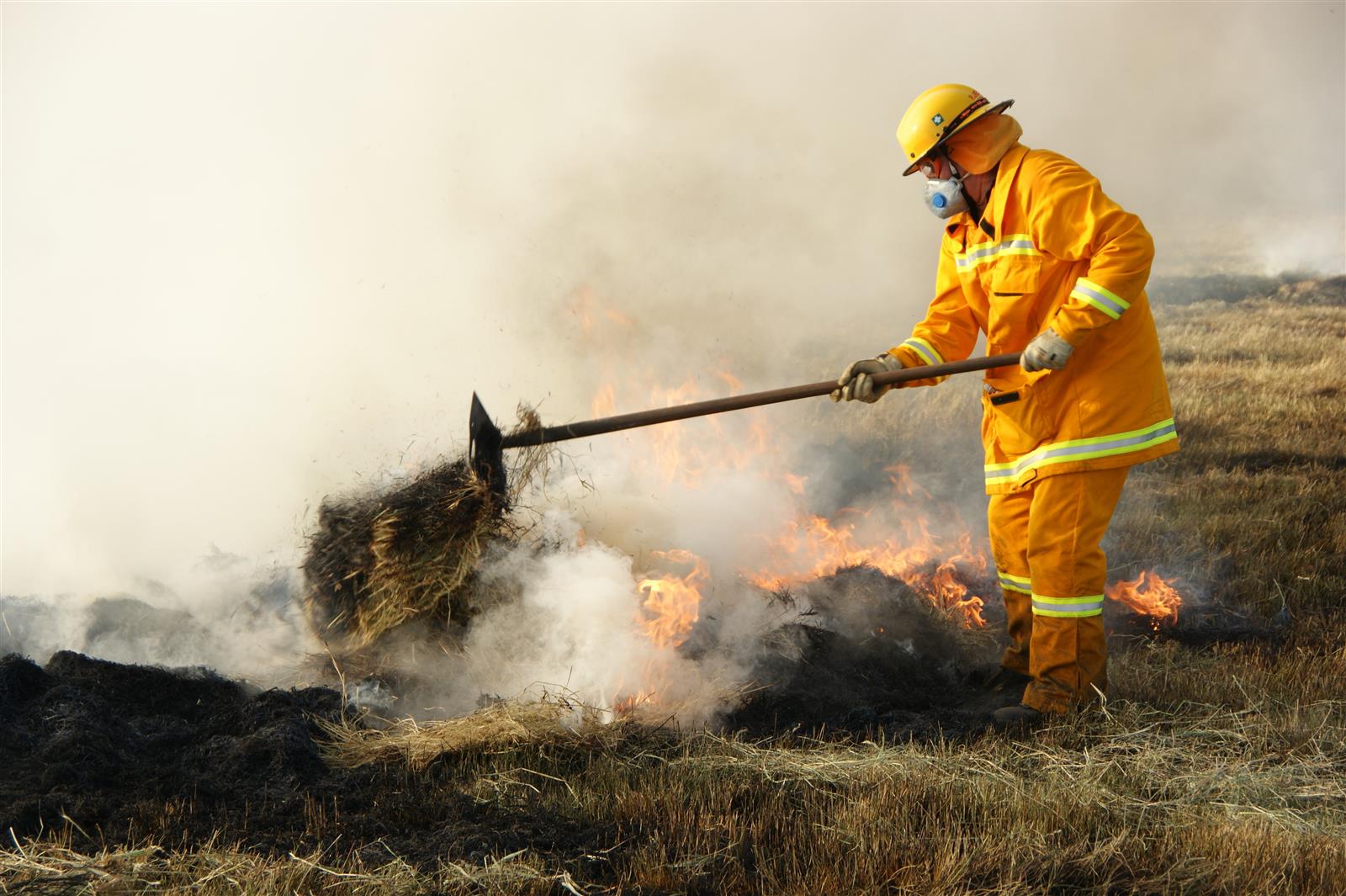
An earlier hay season has Victorian farmers and CFA talking about the dangers of high moisture content in hay as they begin cutting, baling and storing it in warmer conditions.
Although we have endured wetter than usual summers over the past three years, CFA still responded to about 50 haystack-related fires between 1 July 2022 and 30 June 2023.
Confirmation from the BOM that we have El Nino conditions, and a positive phasing to the Indian Ocean Dipole, means hotter and drier forecasts are expected and this year's agricultural activities are set to kick off a lot sooner and have elevated risks of fire ignition and spread.
With hay season running around three weeks ahead of time, and farmers in the west starting to bale their hay in late September/early October, farmers and CFA are calling on everyone to be attuned to the risks of spontaneous combustion.
CFA Chief Officer Jason Heffernan said if hay is baled with high moisture content and is green, it can heat up like compost which can lead to spontaneous combustion weeks or months later.
“Farmers who have decided to carry on with hay production need to be extra vigilant this year to make sure conditions are right for making hay and for the future storage and transport as well,” he said.
“Hay fires are a real threat to properties and stock in primary production areas.
“Whether you’re a seasoned hay grower or switching to hay this year, it’s imperative to take care of your hay and crops this fire season.
“Consider the storage of your hay to avoid spontaneous combustion which can lead to ignition."
When hay is either not properly cured and dried out before baling, or not stored to protect it from rain or damp conditions, moisture content in the bales is higher than the recommended level. If stored in environments with high temperatures and little airflow, a biological reaction could lead to a fire.
Haystack fires can also start easily from lightning strikes or sparks from equipment.
“You should regularly monitor your haystacks by using a temperature probe or a crowbar to detect heating hay.
“Signs of heating hay can include steam rising from the stack or unusual odours like burning, musty smells, pipe tobacco smell or a caramel smell.
“By being vigilant, you’re protecting yourself from the financial impact of losing valuable fodder and protecting your property and family from the potential danger of hay fires.”
Haystack tips
- Ensure hay is well cured before baling.
- Know the history of the hay you purchase.
- Keep haystacks to a limited size and separate your haystacks.
- Monitor moisture and temperature of your hay regularly.
- Watch for unusual odours such as pipe tobacco, caramel, burning or musty smells.
- Store hay in separate stacks or sheds away from farm equipment and other buildings.
- Keep your hay dry. Protect it from rain, leaking rooves or spouts, and runoff. Cover stacks with tarps or hay caps.
- Don't stack hay right to the top of a hay shed. Allow some air to circulate at the top - this helps to carry away moisture.
Temperature guide – what to do when your hay is overheating
Use a thermometer in a probe or insert a crowbar into the middle of the stack for two hours.
- Less than 50°C Can handle the crowbar without discomfort
Check temperature daily. - 50°C - 60°C Can only handle crowbar for short time
Check temperature twice daily. - 60°C - 70°C Can touch bar only briefly
Check temperature every 2 – 4 hours. Move hay to improve air flow. - Over 70 °C Bar is too hot to hold
Potential for fire. Call 000 immediately. Avoid walking on top of haystack. At this stage pulling apart the hay may provide the oxygen it needs to ignite.
For more information please visit here.